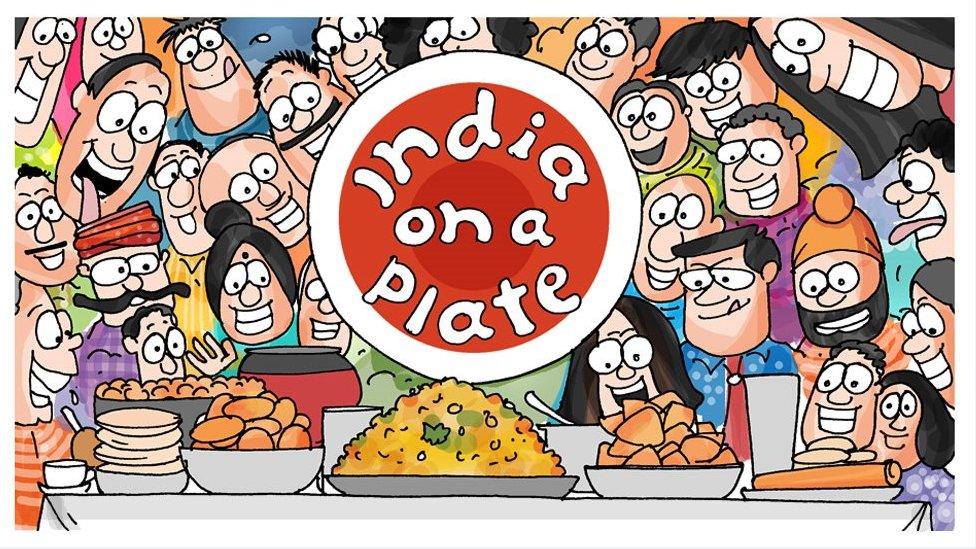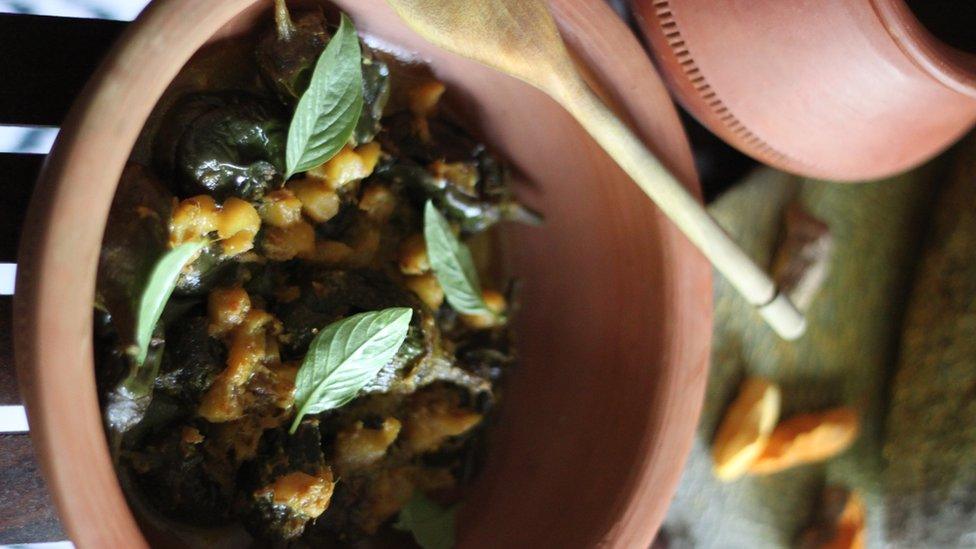Cooking the world's oldest known curry
- Published
Food writer Soity Banerjee cooks the world's oldest curry
Everyone eats. But what if you were told that 4,000 years ago they ate almost exactly what you ate last night? That re-heating it in the microwave was the only real advantage you had over an average Harappan home cook.
In other words, had you been washed ashore four millennia ago on the banks of the now lost river of Saraswati and hitched a bullock cart ride to Farmana in the Ghaggar valley near modern-day Delhi, here's what you might have eaten - a curry.
For in 2010, when advanced science met archaeology at an excavation site in Farmana - southeast of the largest Harappan city of Rakhigarhi - they made history, and it was edible.

India on a plate

This is the second article in a BBC series India on a plate, on the diversity and vibrancy of Indian food. Other stories in the series:

Archaeologists Arunima Kashyap and Steve Webber of Vancouver's Washington State University used the method of starch analysis to trace the world's first-known or "oldest" proto-curry of aubergine, ginger and turmeric from the pot shard of a bulbous handi (pot).
Extracting starch molecules from 50 different surfaces - including pots, stone tools, and the dental enamel of humans and domesticated cows, often fed leftovers - they identified the molecular thumbprints of vegetables, fruits and spices, and studied the effect of heat, salt and sugar on them.
Soon, mangoes and bananas made their mark under the microscope as did dates and gourds. Roasted and boiled, they were each mapped for clues in a lab. Readings of such plant "microfossils" also undercut the dependence on macro-botanical evidence like carbonised seeds and grains in traditional archaeology.
But mostly, they celebrated the building of a new, scientific highway to Harappa. A trapdoor to its kitchens.

The 'original' curry

Starch analysis traced the world's first-known or "oldest" proto-curry of aubergine, ginger and turmeric
Serves 1-2
While the proto-curry that was discovered in Farmana only had aubergine, turmeric, ginger and salt in it, we've taken the liberty to combine them with a few other ingredients that were available at the time. Cook it in earthenware, if you can.
6-7 small aubergines, washed and slit
1-inch piece of ginger, ground
1 fresh turmeric, ground, or ¼ tsp turmeric powder
Salt
1tbsp raw mango cut into cubes
2-3tbsp sesame oil
¼ tsp cumin
Dehydrated sugarcane juice to taste
A few leaves of sweet basil (optional)
Method:
Wet grind the ginger, turmeric and cumin seeds. Heat sesame oil, add the paste and cook for a couple of minutes. Tip in the aubergines, add some salt and give it a good stir. Cover and cook until the aubergines are nearly cooked through; add some water, if need be. Now, stir in the mango and dehydrated cane juice. Simmer for a few minutes or until the mango is cooked. Check seasoning and serve with bajra roti (pearl millet flatbread).

The frugal curry from Farmana was a fine dish - as long as you forget that while someone was stirring the pot of curry here, the Egyptians were drawing elaborate scenes of bread making at Luxor and brewing buckets of cloudy beer.
But what the humble Harappan curry lacks in glamour, it makes up for in substance. It proves, for instance, what the late food historian KT Achaya had suspected all along - that aubergine is a wild native of the subcontinent, and its Sanskrit names vartaka or vrntaka predate the language (they have Munda roots). Or that ginger or adraka first grew in the region too, as did turmeric or haridra, a word with "aboriginal connotations".
In short: the turmeric latte that Instagram and you "discovered" this season may have existed before iron was first smelted!

What the humble Harappan curry lacks in glamour, it makes up for in substance
But really, must one know the antecedents of a curry to enjoy it with a pint of beer?
Yet, the history that is caught between the covers of a textbook, divvied up by kings and kingdoms, battles and conquests, pottery styles and the size of granaries and baths, rarely takes into account the people who lived through it.
People who may have enjoyed their aubergine curries and mango chutneys before a mighty river dried up and the monsoon winds went rogue. People who emptied out of towns and cities in search of better lives and better food.
And at least one person who forgot to wash the dishes one night, about 4,000 years ago.